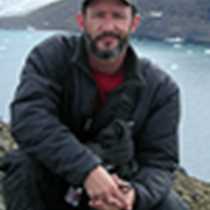Our trip into Glacier Bay included many great sights and sounds. The sights were of Mt. Fairweather, tufted puffins, the great Margerie and Grand Pacific Glaciers, brown bears, orcas, and great expanses of geology. The sounds were kittiwakes crying, Steller sea lions barking, oyster catchers peeping, and ice calving in a great thunderous roar. These sensory delights are only a part of what this great jewel of a national park has to offer its visitors.
The bay that makes up the water portion of Glacier Bay National Park did not even exist 200 years ago. Since the time of Vancouver the great rivers of ice have retreated from the damaging effects of the sea water all the way out of the main bay and back up their valleys. They bide their time waiting and working on shoring up the only defense they have: a wall of rock. The glaciers will create a gauntlet of stone debris to protect their face from the sea and when they are ready will surge forth and combine to yet again create a huge tongue of ice that will once again move south and retake the bay. One of these glaciers is Johns Hopkins which is fed by the incredible amount of precipitation, over 100 feet of snow per year, that descends from the Fairweather Range. The two peaks above the glacier are Mts. Wilbur and Orville, both over 12,000 feet high but only a few miles from the sea making the Fairweather range one of the steepest in the world.




